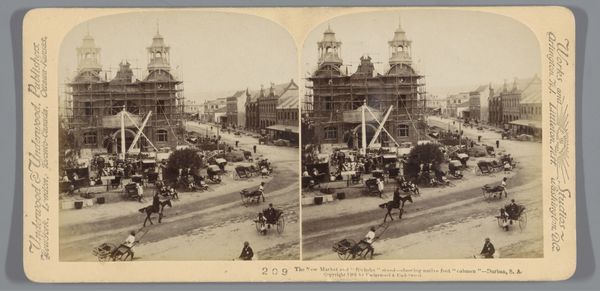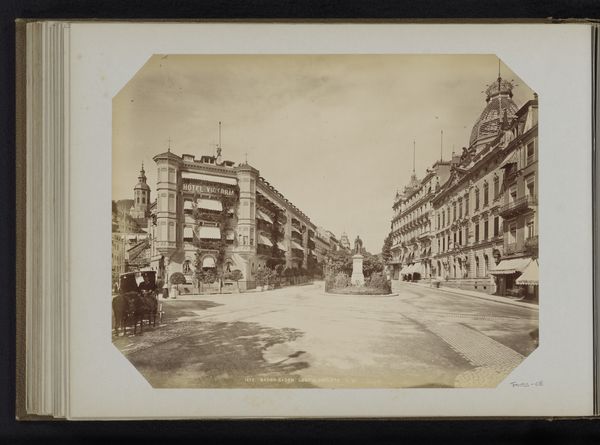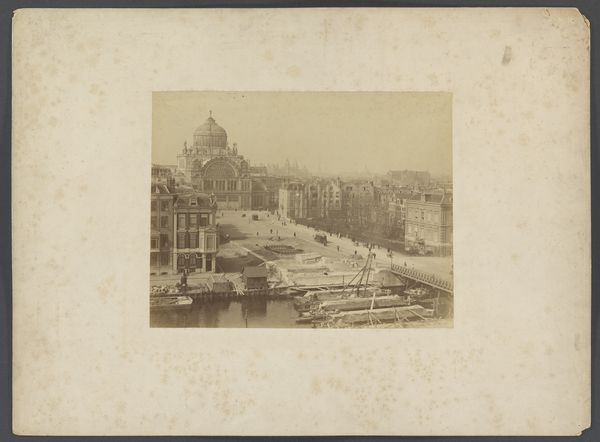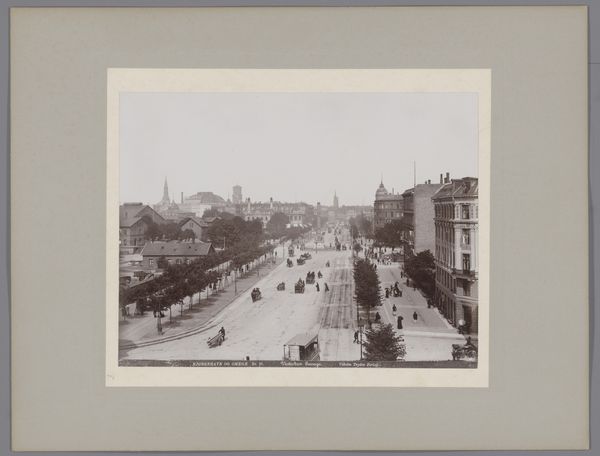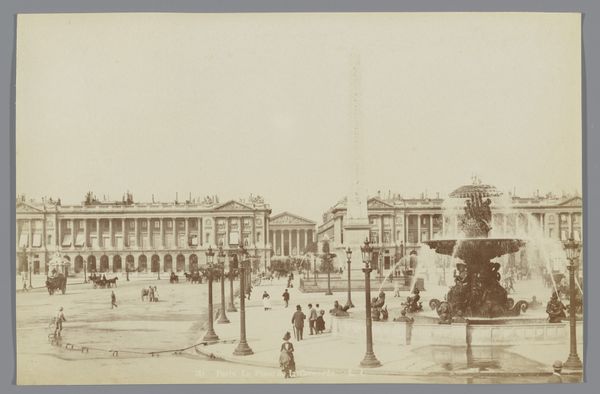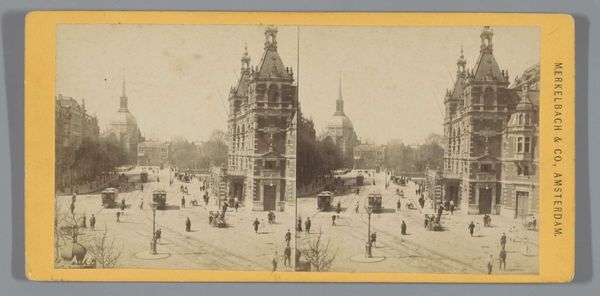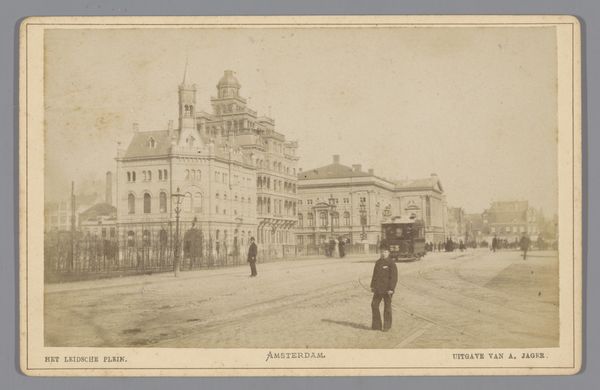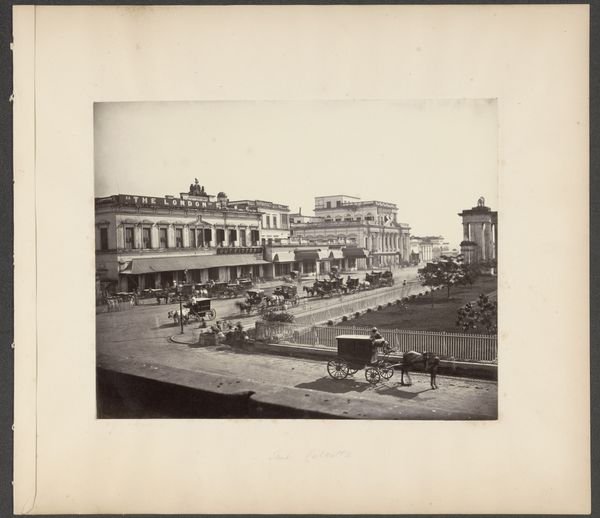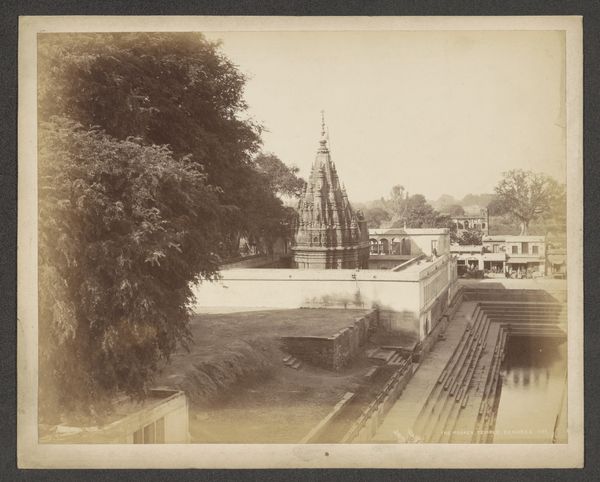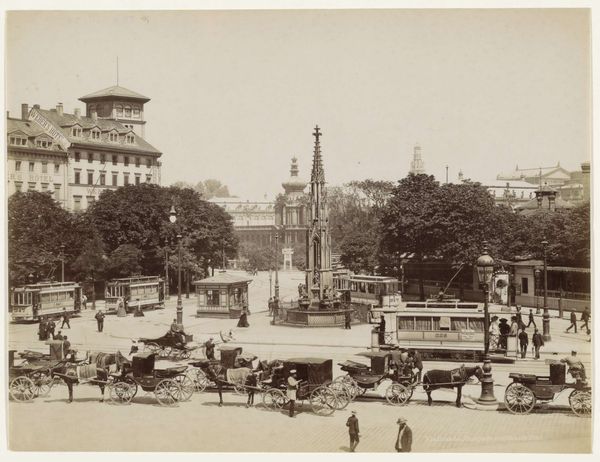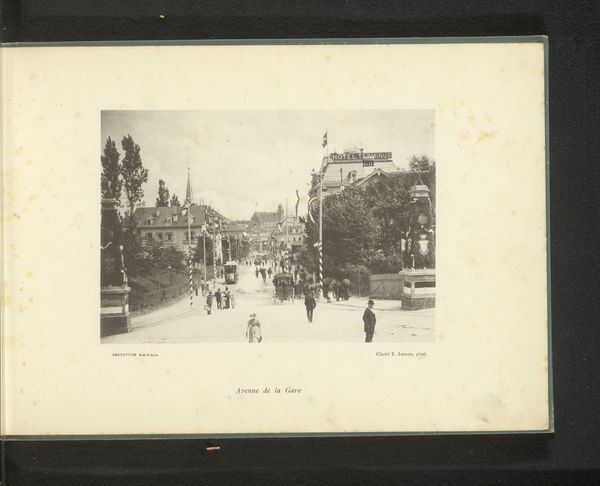
Gezicht op de Hogesluis in Amsterdam, met op de achtergrond het Paleis voor Volksvlijt 1860 - 1890
0:00
0:00
daguerreotype, photography
#
daguerreotype
#
photography
#
cityscape
#
genre-painting
Dimensions: height 109 mm, width 169 mm
Copyright: Rijks Museum: Open Domain
Curator: This daguerreotype, simply titled "Gezicht op de Hogesluis in Amsterdam, met op de achtergrond het Paleis voor Volksvlijt," was taken sometime between 1860 and 1890 by an anonymous photographer. What are your first impressions? Editor: Immediately, it evokes a sense of burgeoning industrial progress, but through a lens of palpable human scale. The material presence of the stone bridge, the deliberate placement of lamp posts... everything feels precisely crafted. Curator: Absolutely, it reflects the intersection of social life and civic construction. The Hogesluis bridge acts as both a physical connector and a symbolic link between Amsterdam’s past and its rapidly industrializing future. The Palace for People's Diligence in the background serves as a statement about class mobility and the social reforms which took place in the mid 19th Century, doesn’t it? Editor: Indeed. We see how technological progress, showcased by that nascent railway line in the image's center, intersects with the very human act of building—that railway represents resources extracted and labor utilized. Who were these anonymous workers whose effort made possible such an image of bourgeois comfort? Curator: Those are key questions! And how would the accessibility afforded by these urban improvements impact people from all social backgrounds? The question is further highlighted by the genre elements of the picture, like the people in the foreground. The gender divide amongst those depicted in the artwork suggests there is indeed an unbalanced allocation of that purported ‘progress.’ Editor: I'm compelled to know what raw materials went into constructing the bridge and that rather ornate palace and what specific industries they empowered. Curator: Focusing on those industries is interesting since they may or may not correlate with the lives of those portrayed, raising questions of cultural value versus economic prosperity, who partakes in and defines each? Editor: This piece really encapsulates the rapid development during this era. Its documentary quality shows a complex story that encompasses both promise and stark divisions. Curator: Absolutely. By centering the narrative around production and access, as we've both done, it allows us to consider who and what truly shaped the city’s trajectory.
Comments
No comments
Be the first to comment and join the conversation on the ultimate creative platform.

